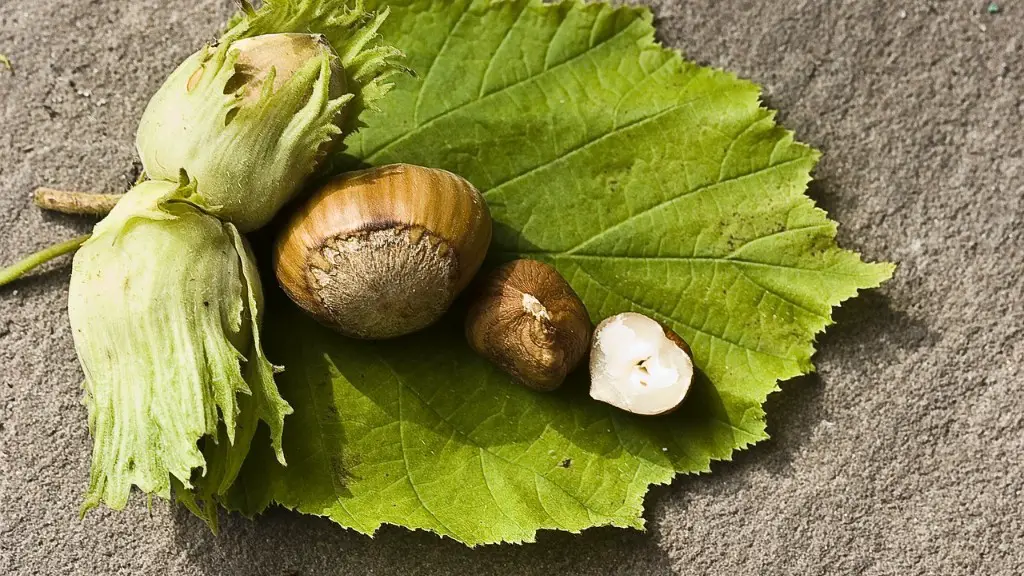Indoor palm trees
Indoor palm trees come in many different shapes and sizes. While their beauty is undeniable, their potential as an indoor plant is one that should not be overlooked. Over the years, houseplant enthusiasts have looked to the ancients and their extensive use of palms to achieve beauty and grace indoors. Whether discussing palms in the ancient temple courtyard of a Pharaoh, or the impressive presence of palms placed about the business floor of a modern high rise, one has to admire the power and design of these “trees of life”.
The best indoor palm trees provide a beautiful, naturalistic and living environment to any interior setting. The rich, deep green of the emerald palm will bring a sense of vibrancy and life to any room. For those looking for a splash of boldness and drama, the Phoenix Palm is the perfect fit. With its crisp and incredible foliage it will be the centerpiece of any room.
With their hardiness and tolerable conditions, indoor palms are relatively easy to maintain. While some varieties of palms are a bit fussier than others, generally, most can be grown indoors in places with ample light, warm temperatures, and humidity. Larger palms should be moved carefully since their long and tall trunks can easily snap or crack. When grown indoors, bear in mind that palms are ever-green plants and that they will need some special care with bright lighting, moderate temperatures and no sudden changes.
When purchasing a palm for indoors, make sure to consider the size and shape of the room. Some palms are much larger and need more space, while others can fit perfectly into any nook or cranny of your home. Also, keep in mind that many palm varieties require regular watering, fertilizer, and humidity. It is important to research the particular species chosen, as this will affect the amount of care and attention that it needs.
One of the best palms for indoors is the Pony Tail Pal. The Pony Tail Pal has a thick, bulbous trunk, a full crown of foliage, and a pleasant, feathery texture. It is low maintenance and can adapt to low light and low humidity levels. Another great option for the indoors is the Kentia Palm. The Kentia Palm is an Australian palm that has a slower growth rate than other palms and is tolerant of dry and low light conditions. It can grow up to 10 feet tall and makes for a majestic indoor presence.
For those looking for a dwarf selection for indoors, the Pygmy Date Palm is an ideal choice. The Pygmy Palm is a popular variety, due to its attractive small size and attractive fronds. Known for its excellent cold tolerance, it is great for air-conditioned rooms. Additionally, it is low maintenance and can do well in a variety of light and water conditions.
There are several types of palms that make excellent houseplants. They are usually easy to care for and can provide a beautiful, lush presence indoors. When choosing a palm for indoors, think about the size and shape of the room, the light and heat levels in the space, as well as the maintenance that is best suited for the variety. With the right selection, a palm can easily be a stunning addition to any home.
Palm Tree Benefits
Palm trees are a great way to bring life and character to any space. Not only do they create a beautiful atmosphere and lend a touch of elegance to any room, but their presence can improve air quality and increase oxygen levels. Palms also make a great noise buffers, and their fronds are great for filtering out dust. Palms act as moisture producers, as well, adding to the humidity levels in a space.
In addition to their aesthetic benefits, palms are known to be beneficial for physical and mental health. Palms provide a sense of peace and well-being that can help to reduce stress and anxiety. The presence of a palm in a room can create a calming atmosphere and inspire a more relaxed lifestyle. They are also a great option for those looking to bring a touch of nature without taking up too much room.
Palm trees also have practical uses. For example, many species of palms can be beneficial in purifying air, as they are able to filter out toxins, while some varieties are known to repel pests. Since palms are often able to survive in low-light conditions, they can be a great addition to any room, regardless of the amount of natural light available.
In terms of their creative potential, palm trees can be used to create interesting displays and unexpected design elements. They are great for adding texture to a room, and their distinct silhouettes can be used to draw the eye to certain points in the room. Creative minds can even get creative and string lights, drape with ribbons, and even hang plants from their tall, exotic trunks.
Overall, palm trees provide a truly unique and rewarding experience for those looking to bring life and beauty to any space. With the right selection and care, indoor palms can be stunning adornments that can bring a hint of wildness without taking away from the existing decor.
Types of Palms Suitable for Indoors
When looking for the right palm trees for indoors, there are a variety of options to choose from. Some of the most popular and widely available palms are the Parlor Palm, Areca Palm, Bamboo Palm, Fern Palm and Dypsis Palm. All of these species enjoy some indirect sunlight and respond well to moist, slightly acidic soil.
The Parlor Palm is an ideal option for those seeking a slow-growing, fuss-free palm. This species is great for areas with low light and can be used to add lush texture and life to small areas. In addition, it can survive in temperatures ranging from 60 to 80 degrees and needs regular watering to stay green and healthy.
The Areca Palm is a quick-growing and highly attractive species that can thrive in both high and low light conditions. This species enjoys moist soil and humid air and needs to be watered regularly. It has a feathery crown of leaves and a slender trunk which makes it perfect for tight spaces.
The Bamboo Palm is a unique, low-maintenance palm that is well-suited for indoor use. It does not need direct sunlight and can survive in low light conditions as long as it gets some indirect sunlight. This species is fast-growing and has a bushy, pleated crown of leaves which make it a great choice for hanging baskets or growing in corners. It requires regular water and fertilizer and should be kept away from drafts and cold winds.
The Fern Palm is a popular choice for low-light indoor locations due to its attractive fronds. It can thrive in temperatures ranging from 55 to 65 degrees and needs bright, indirect light and regular watering. This species is slow-growing and has a dense, lush foliage that can make any space look more inviting.
The Dypsis Palm is a fast-growing species that loves bright, indirect light. This species is quite tolerant of low-light conditions but will benefit from the occasional misting and fertilizing. It should be given ample room to grow, as its trunk can reach up to 8 feet in height.
Care of Indoor Palms
Maintaining a healthy indoor palm is not difficult as long as the proper care is taken to ensure its long-term health. When selecting a palm for indoors, it is important to research the particular species to understand its unique needs for light, water and humidity. In addition, regular watering and fertilizer are important for keeping the soil moist and healthy.
When it comes to light, palm trees need some direct sunlight but not too much. Most palms need a minimum of four to six hours of bright, indirect sunlight each day. Low-light palm trees can survive in shady spots, but even they need some bright light to stay healthy. In terms of temperature, most palms need to be kept in a warmer environment that is free from cold drafts.
Because of their special needs for humidity, palms should also be kept in a spot that gets adequate humidity. Fortunately, most indoor palms require little misting or extra moisture, as long as the air is warm and moist. Keeping a bowl of water near the palm is also a good idea to help keep the air around the palm tree moist. And of course, regular pruning of the foliage is important to keep the palm tree looking neat and healthy.
For those willing to put in the effort, the rewards of having a beautiful palm tree indoors can be tremendous. A healthy palm tree can make any space feel more alive and vibrant, while also providing numerous benefits to the health and well-being of the occupants.
Professional Help & Advice
When it comes to choosing the right palm tree for indoors, it is important to seek professional advice. A professional expert can help you to choose the right species for the right environment, as well as advise on the proper care and maintenance of your new indoor palm. This can ensure that your palm tree is given the best chance of thriving indoors.
When looking for an expert to provide advice, it is important to do your research. Make sure that the expert has experience with the species of your choice and that they are knowledgeable about the best care and maintenance practices for the particular species. This can be the most important factor in ensuring a healthy, long-lasting palm tree.
In addition to professional advice, it is also important to do your own research when selecting an indoor palm tree. Look into the unique needs for the species in terms of light, water, temperature and other conditions. Once the right species is chosen, then it is time to start the process of selecting and caring for the perfect palm tree.
Decorating With Palms
When it comes to decorating with a palm tree, there are endless possibilities. Palms can be placed in a variety of locations and can be used as focal points in a room or as an accent to existing decor. Palms can also be used to create interesting displays, such as hanging plants from their tall trunks or placing them in creative arrangements.
For those looking to use a palm to enhance existing decor, there are a few tips that can be helpful. Look for a species that can fit in the space, such as a smaller species or one that is designed for indoor use. Then, think about the type of pot that can be used. A glazed, weatherproof pot is best if the palm will be outdoors, while a clay or porcelain pot can work well indoors.
When it comes to styling and decorating with a palm, there is no right or wrong approach. The goal is to create a look that is pleasing to the eye and that adds a touch of the natural world to the space. Look for unique additions to the design such as an arrangement of other plants, a sculpture or piece of art, or a string of lights that can bring a touch of warmth to the room.
Finally, consider the color scheme of the room and how a palm can fit in with the color scheme. You can use color to contrast the green of the palm and draw the eye to the inviting foliage. You can also pair the color of the pot with existing decor or pick one that stands out and draws attention to the palm’s beauty.





